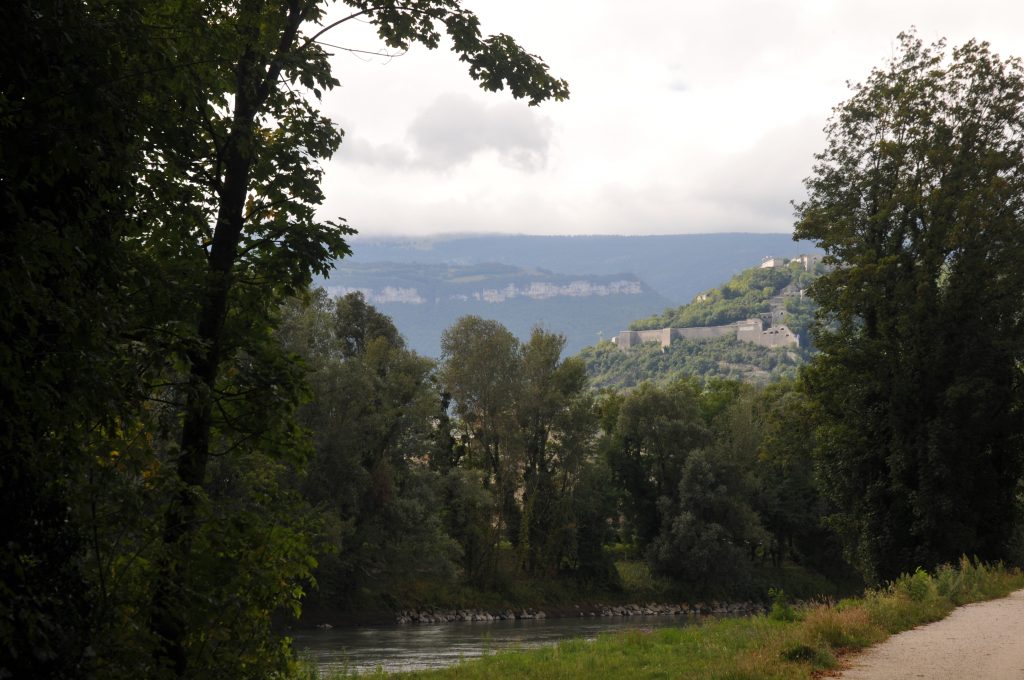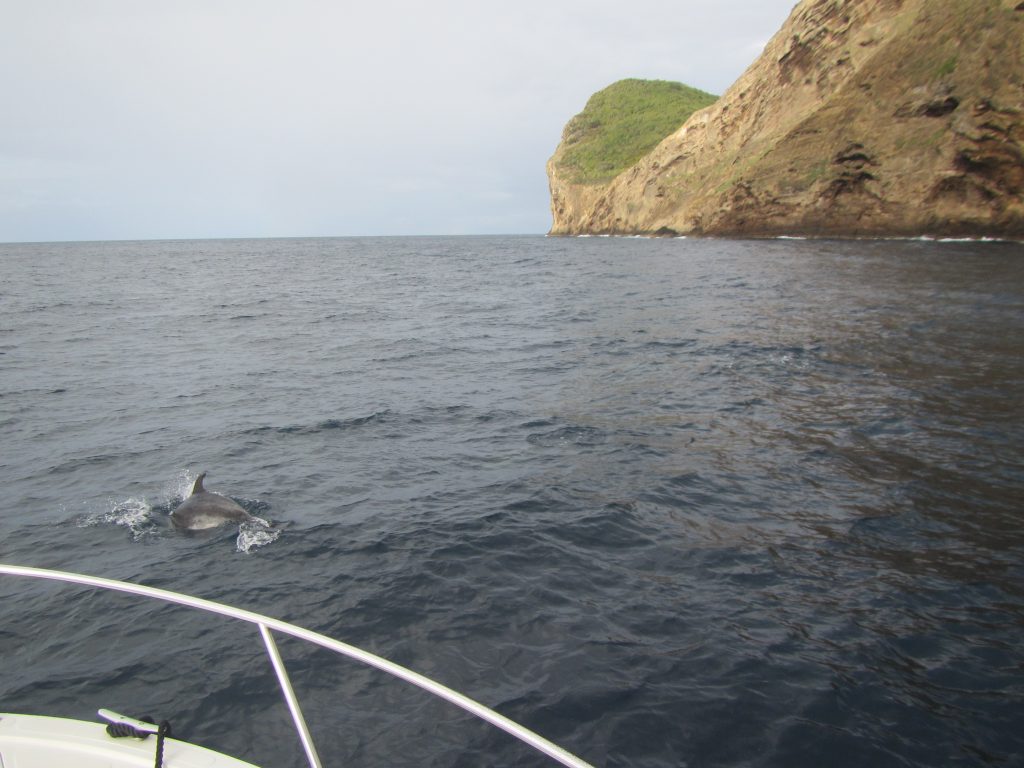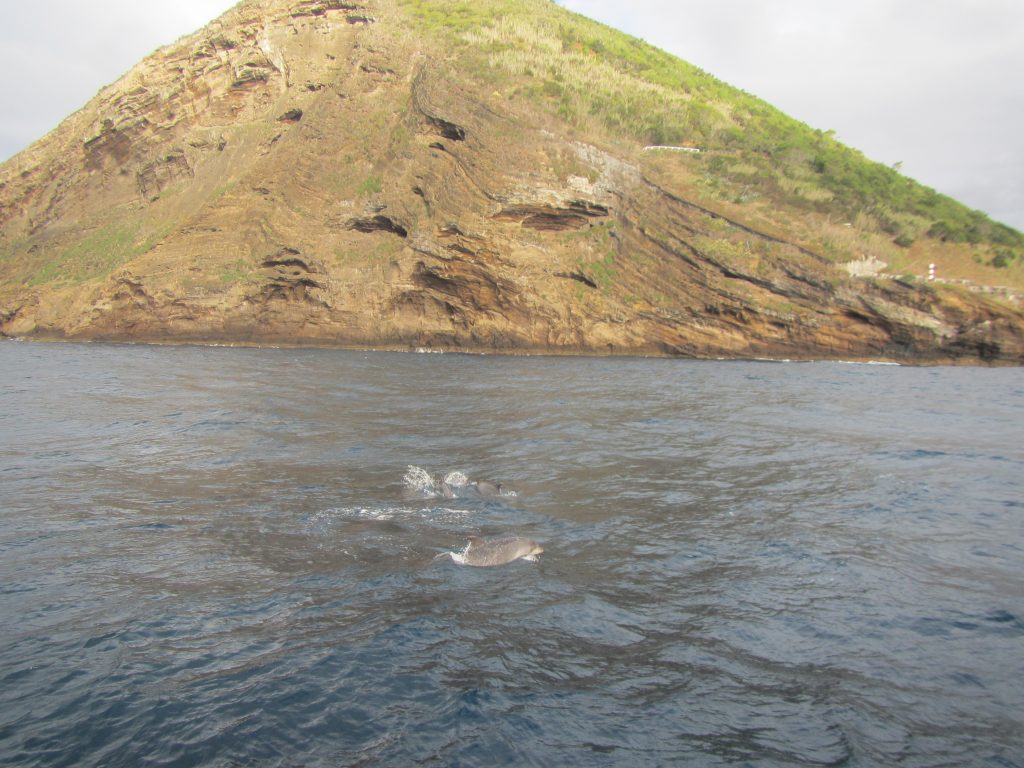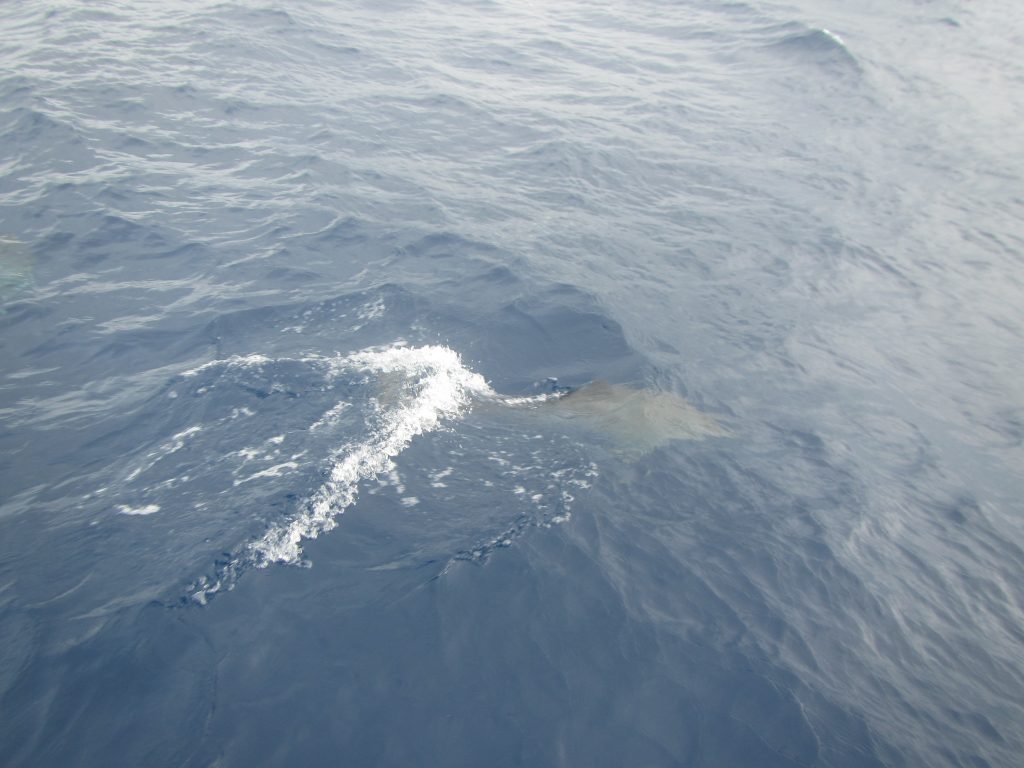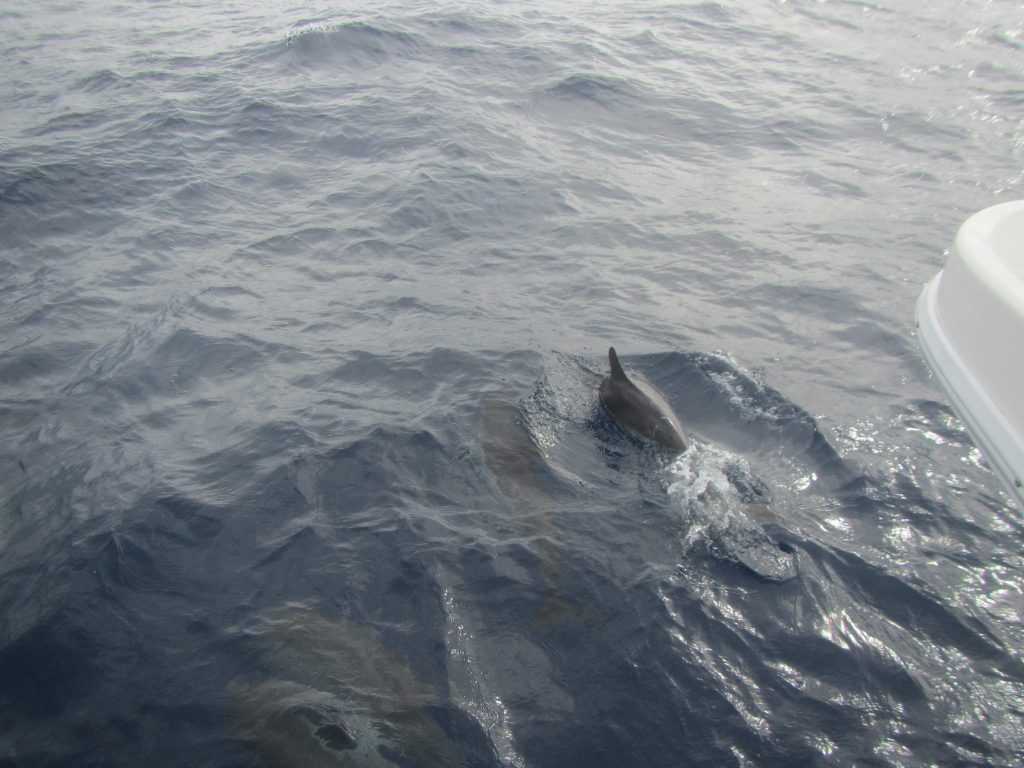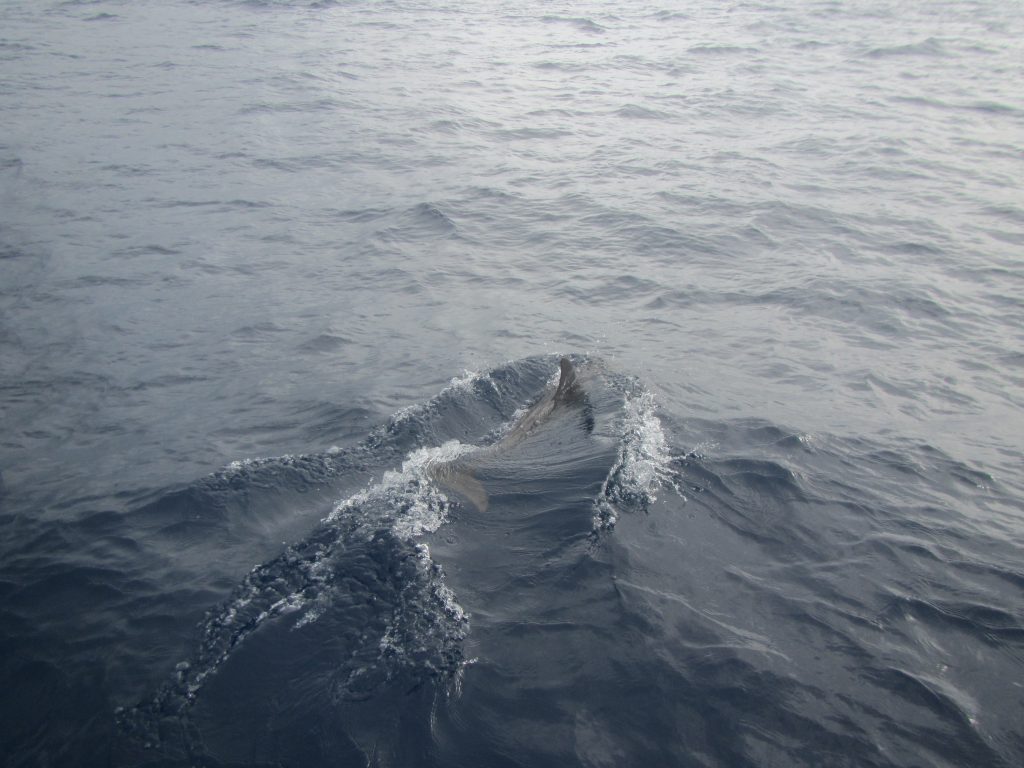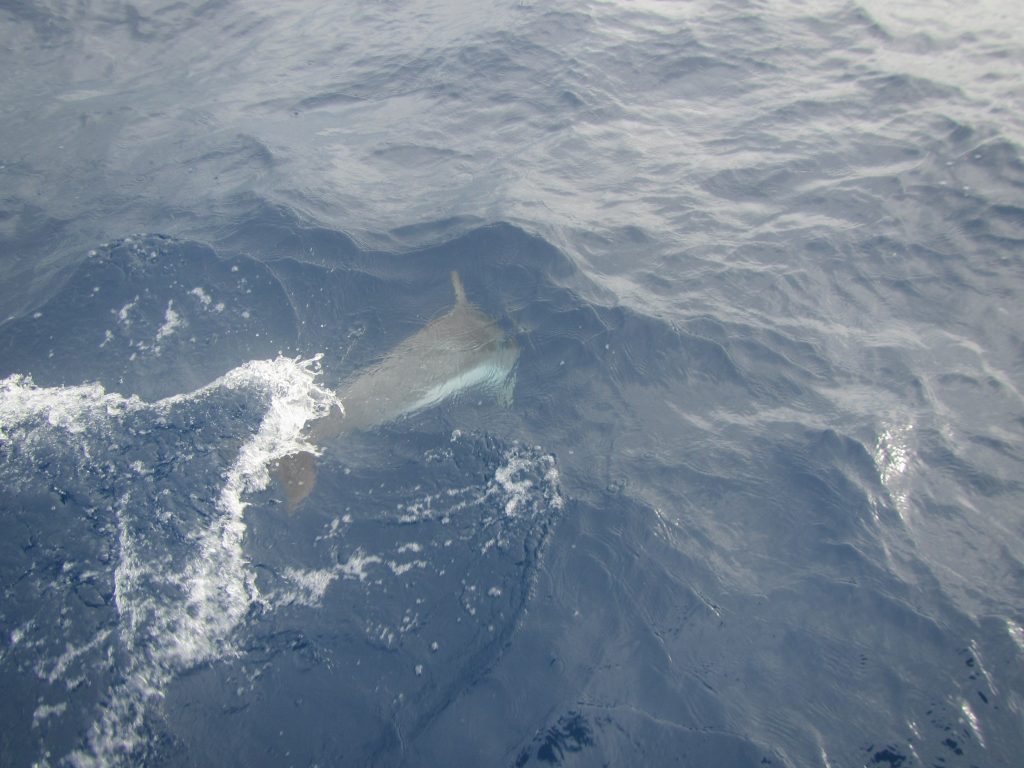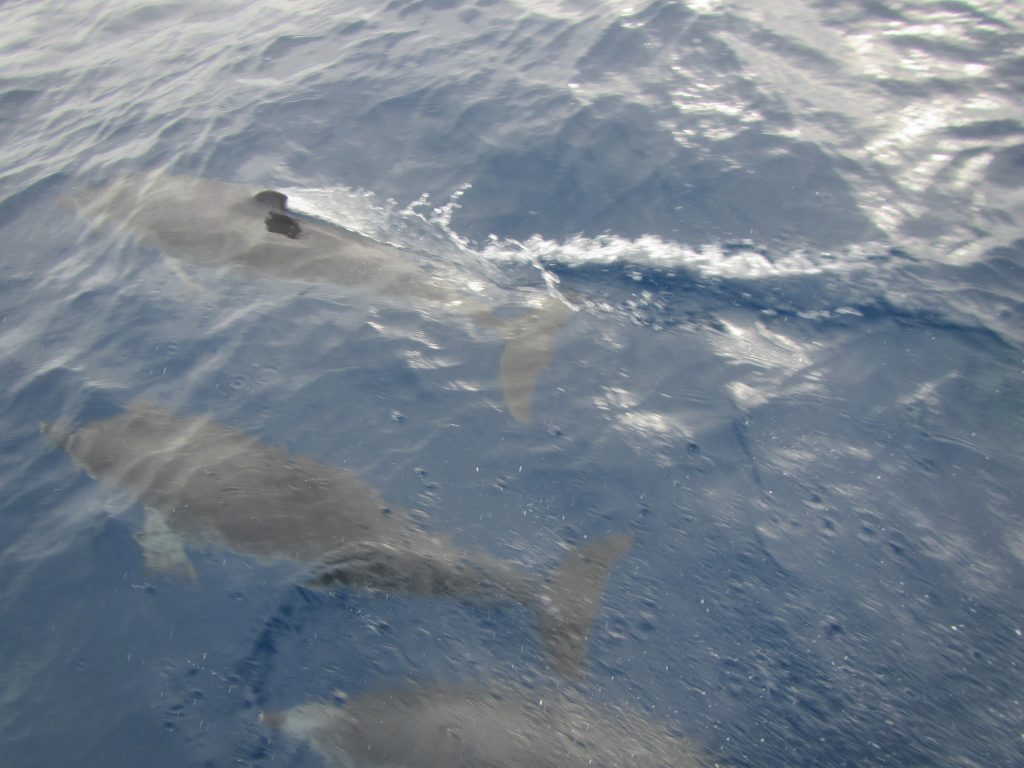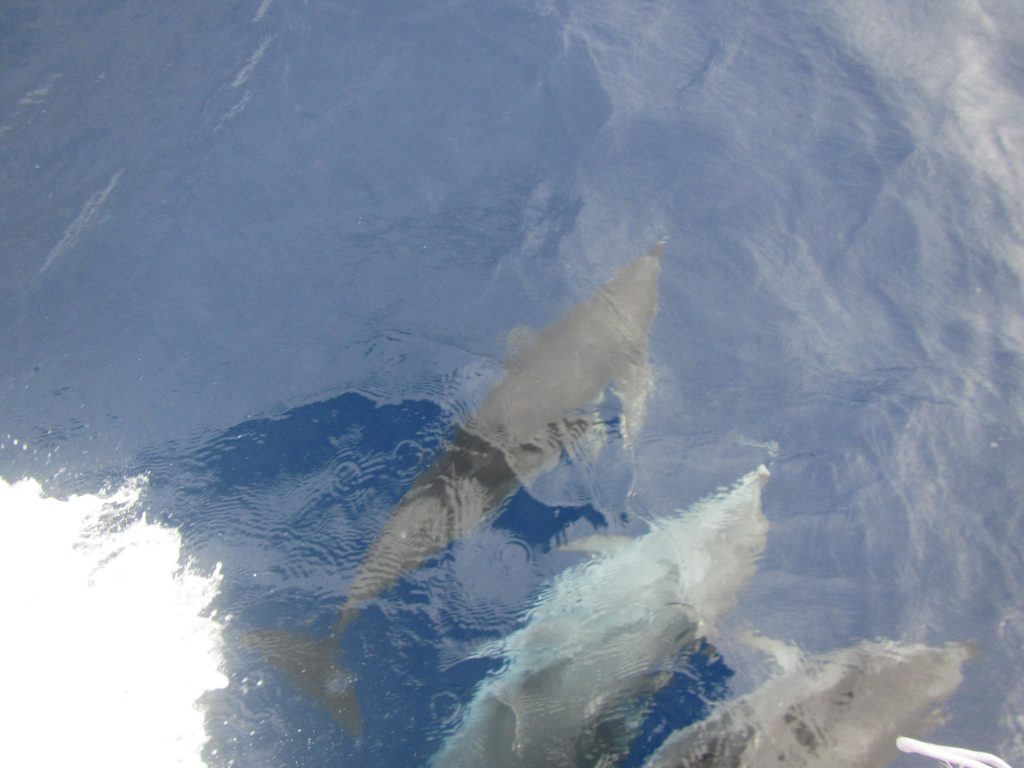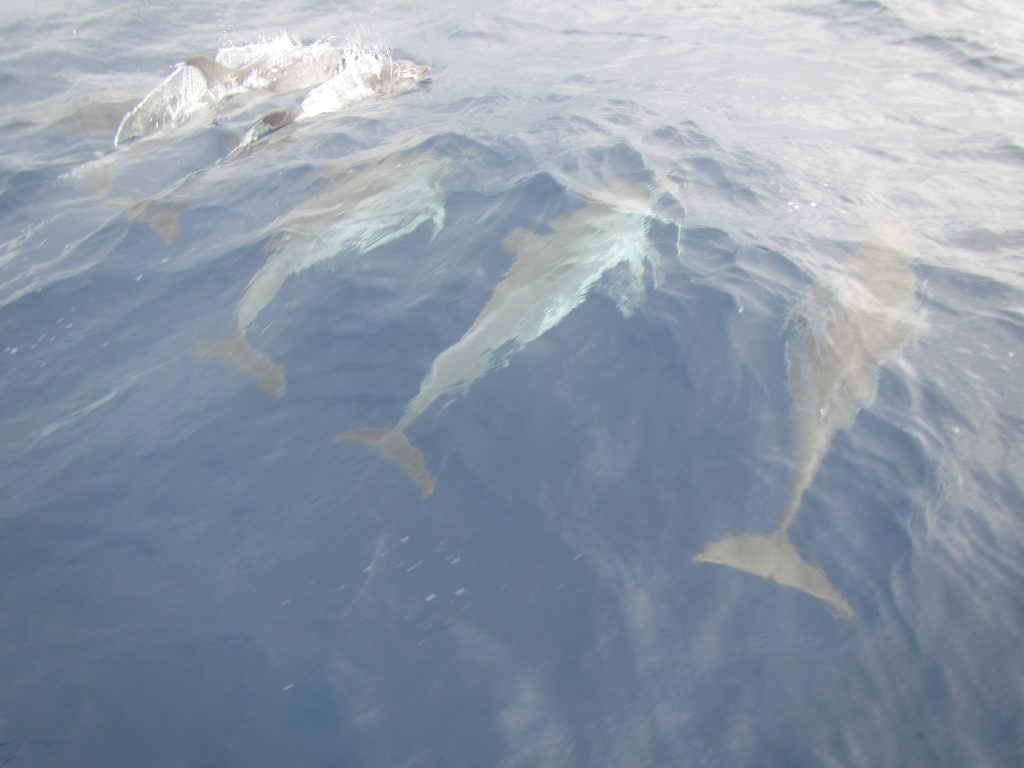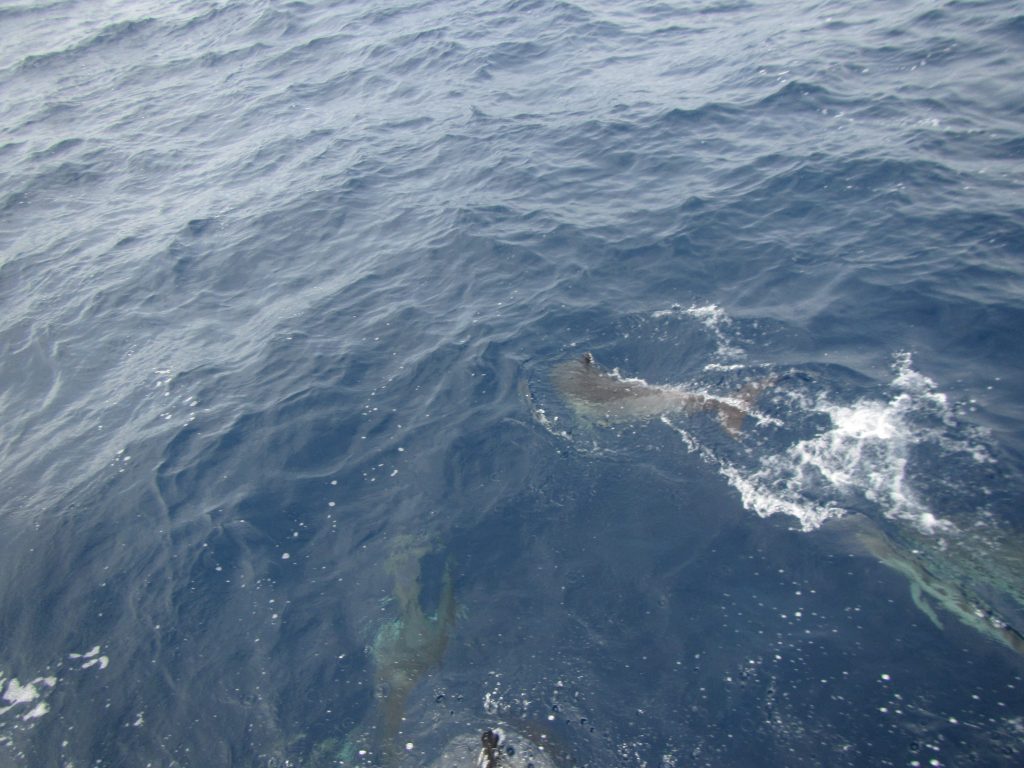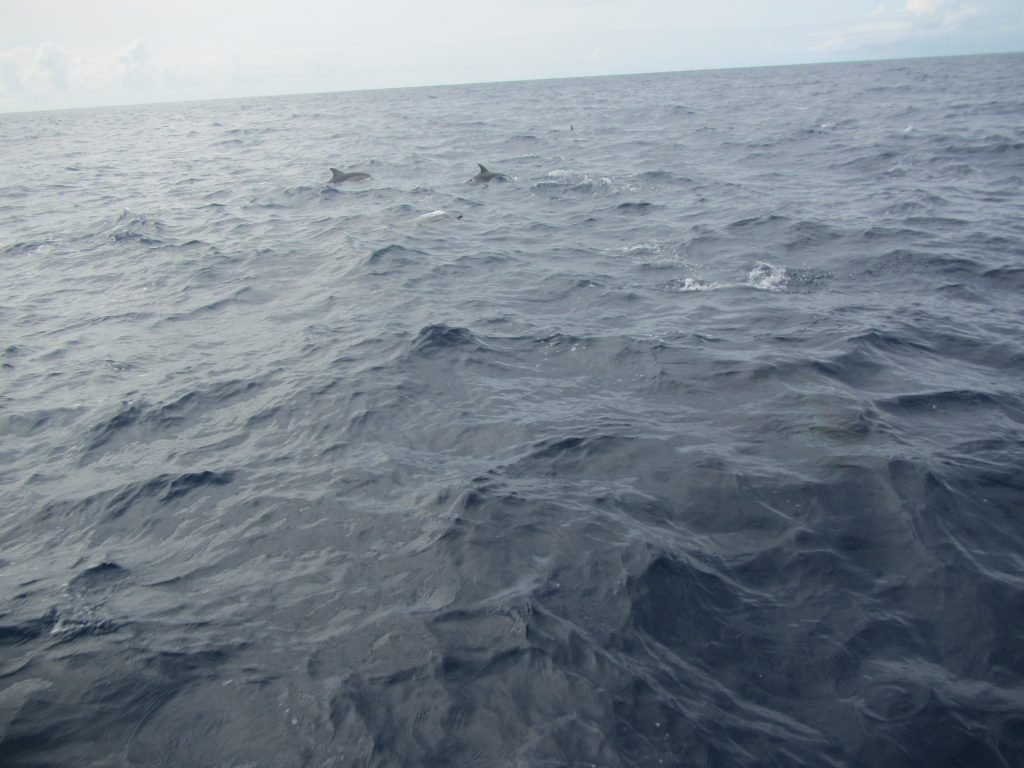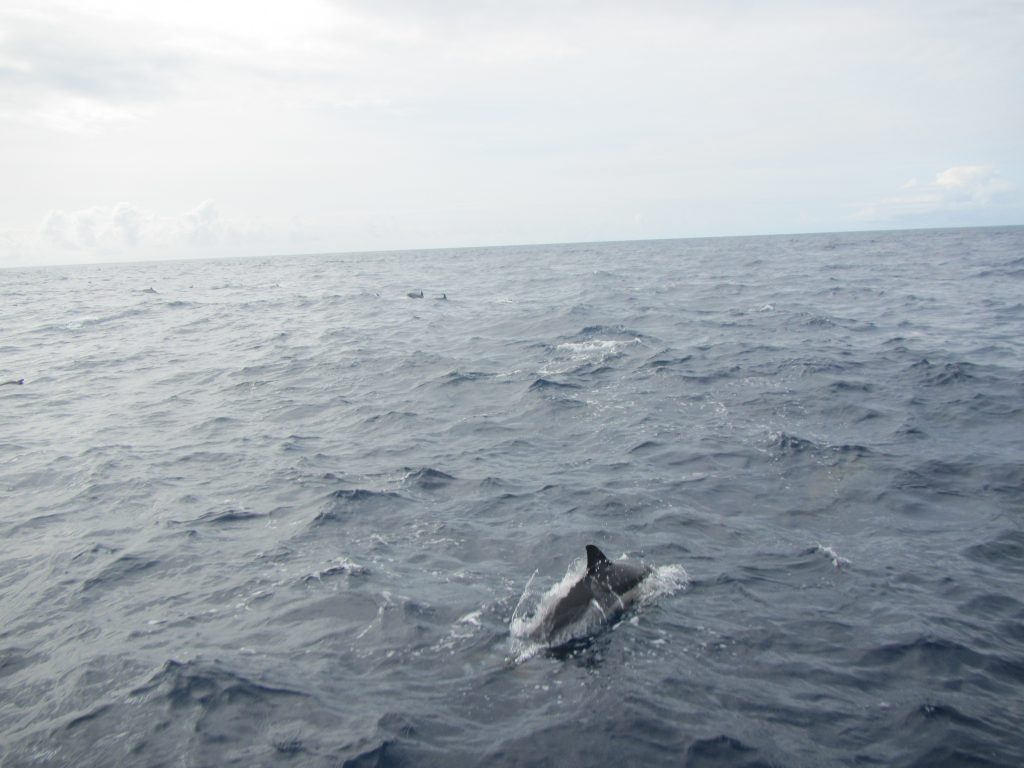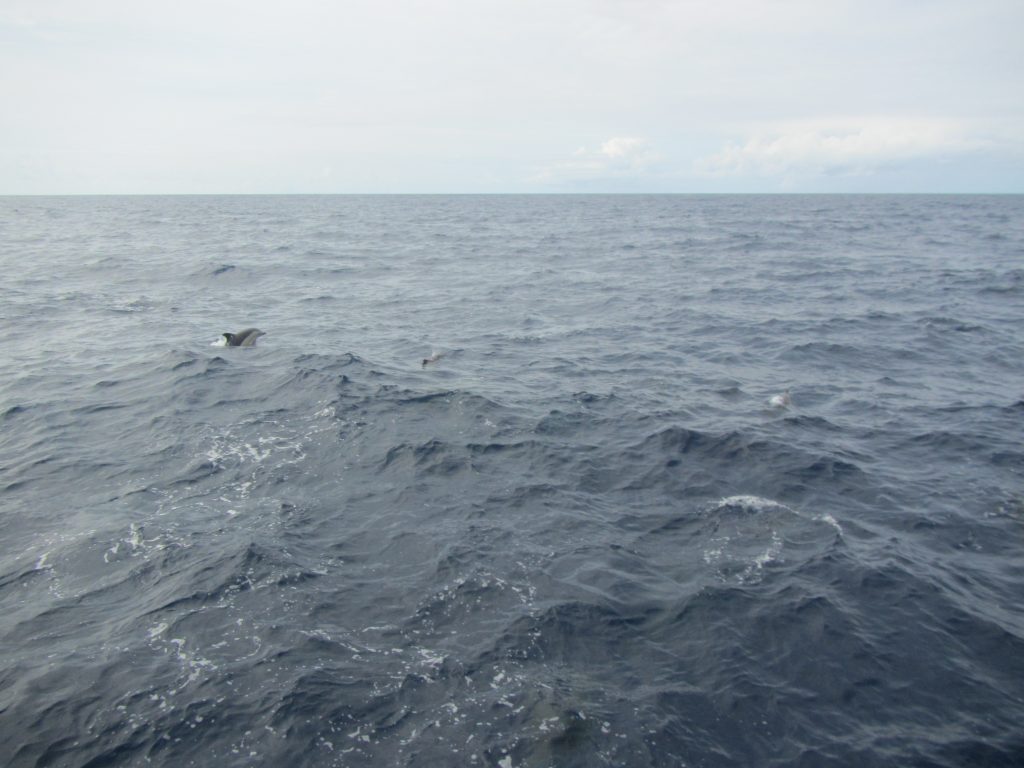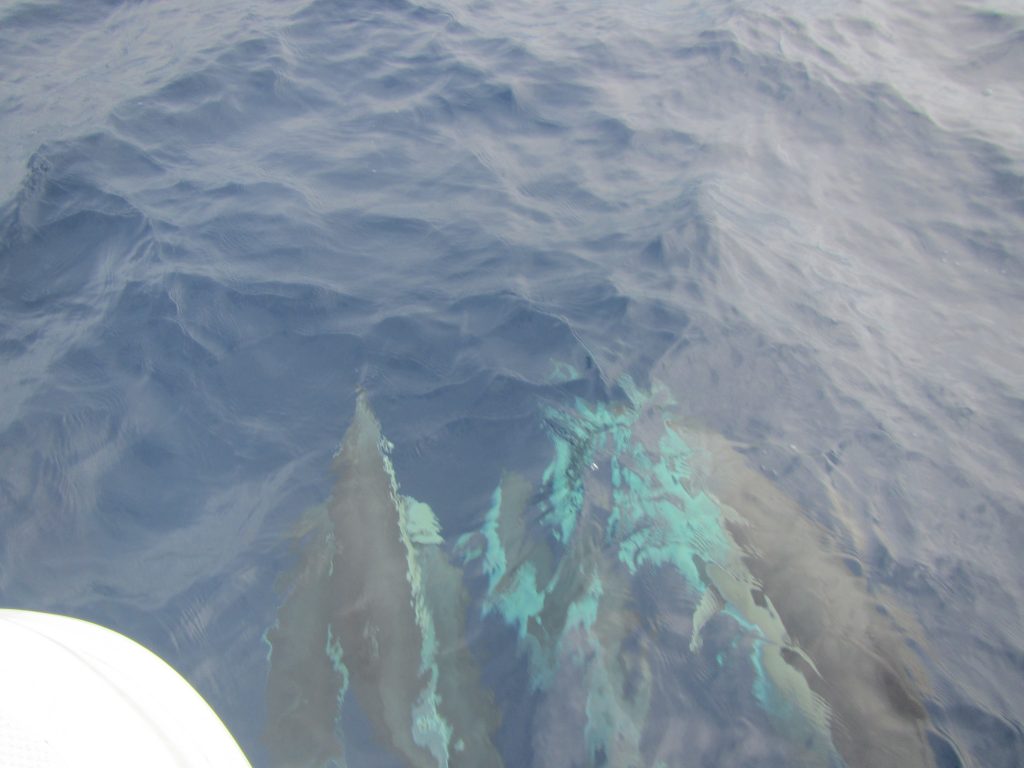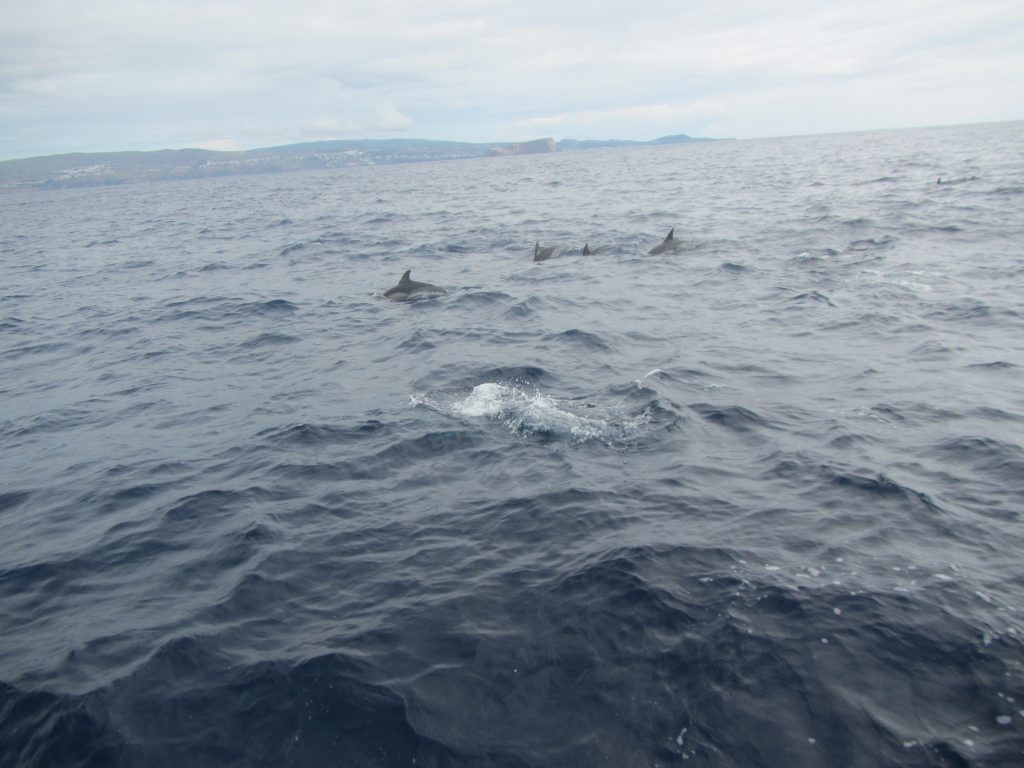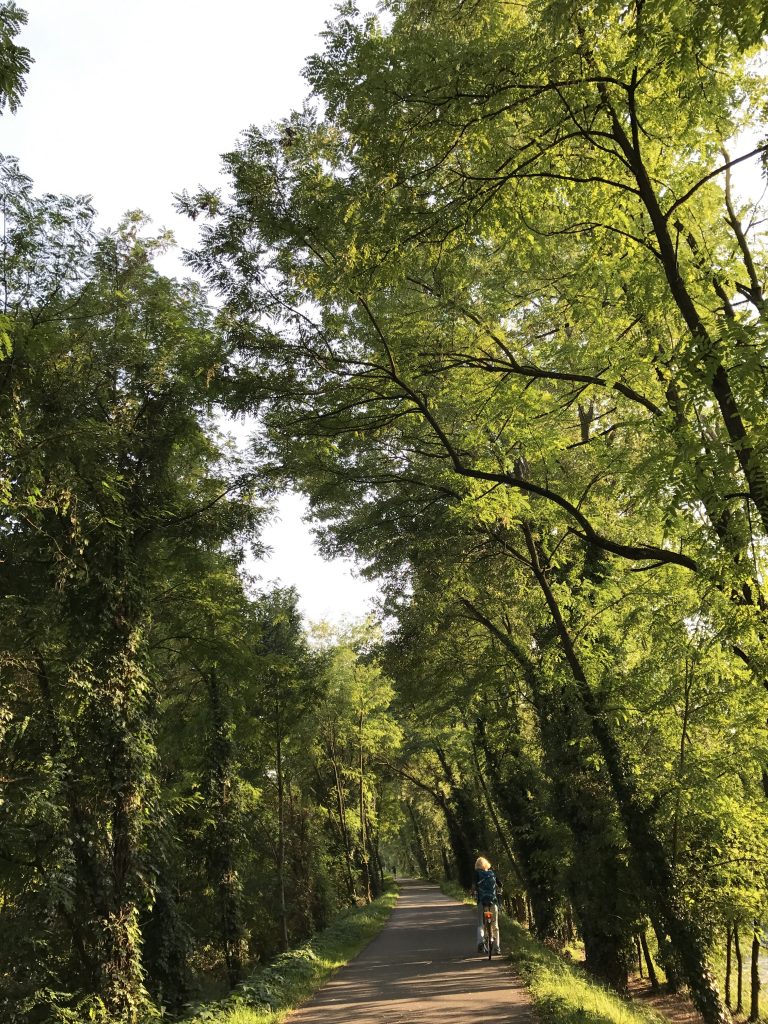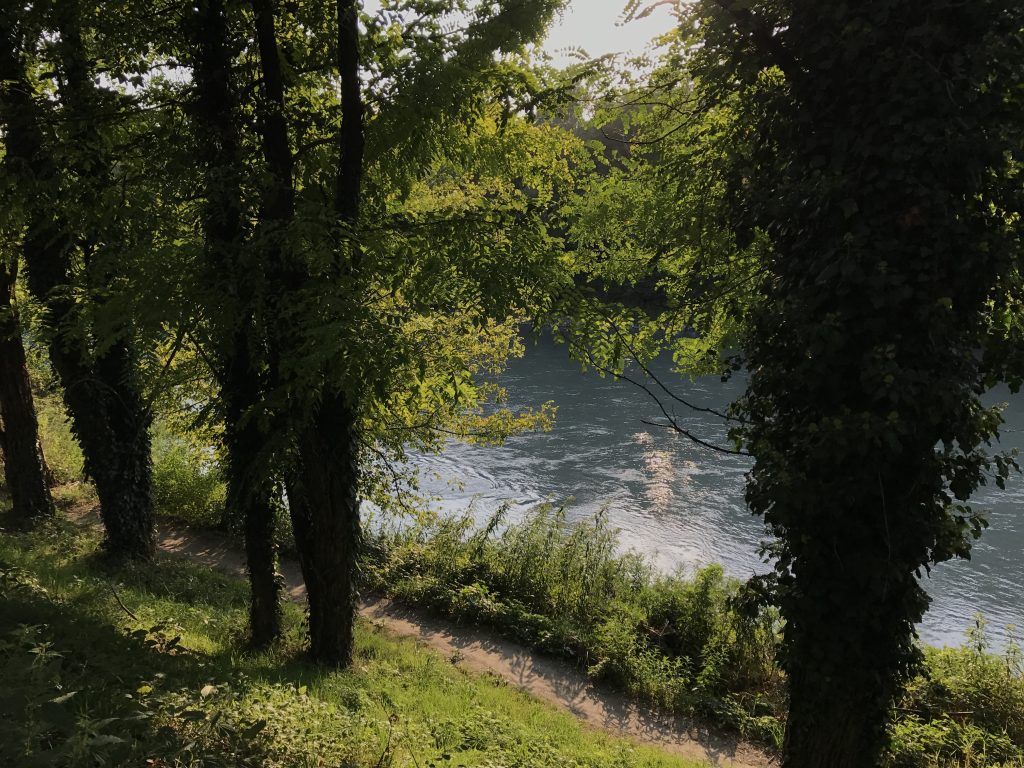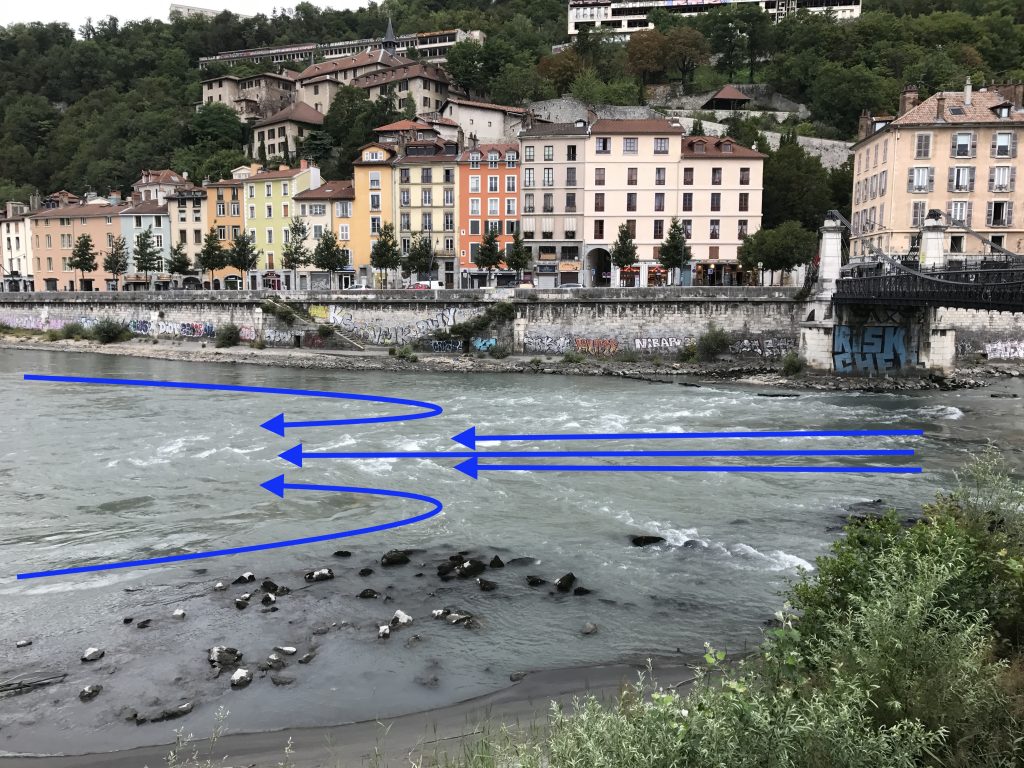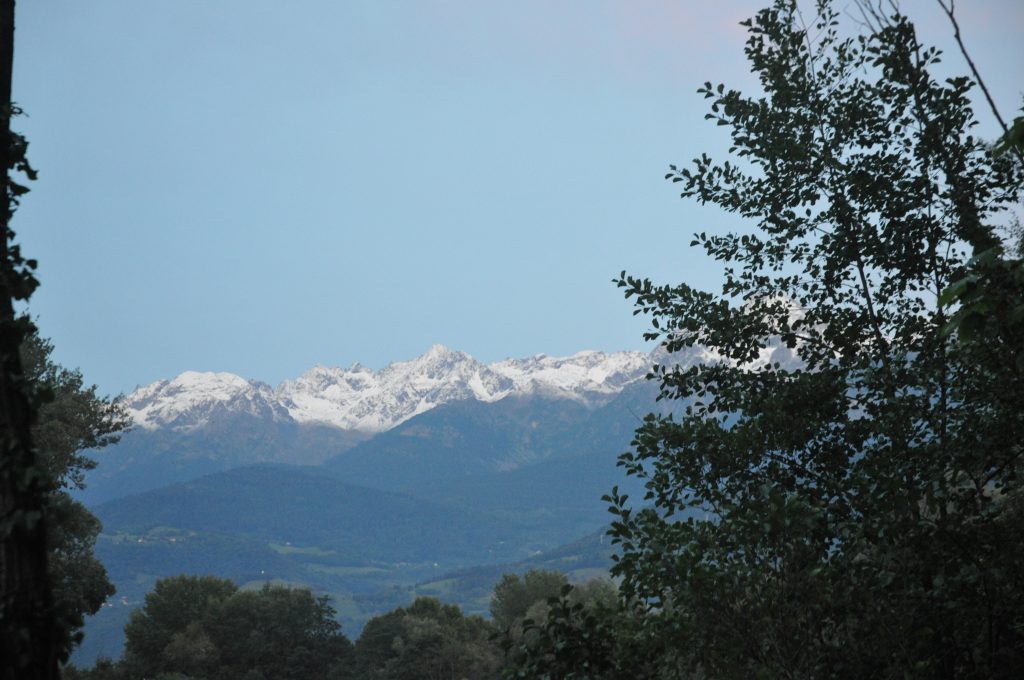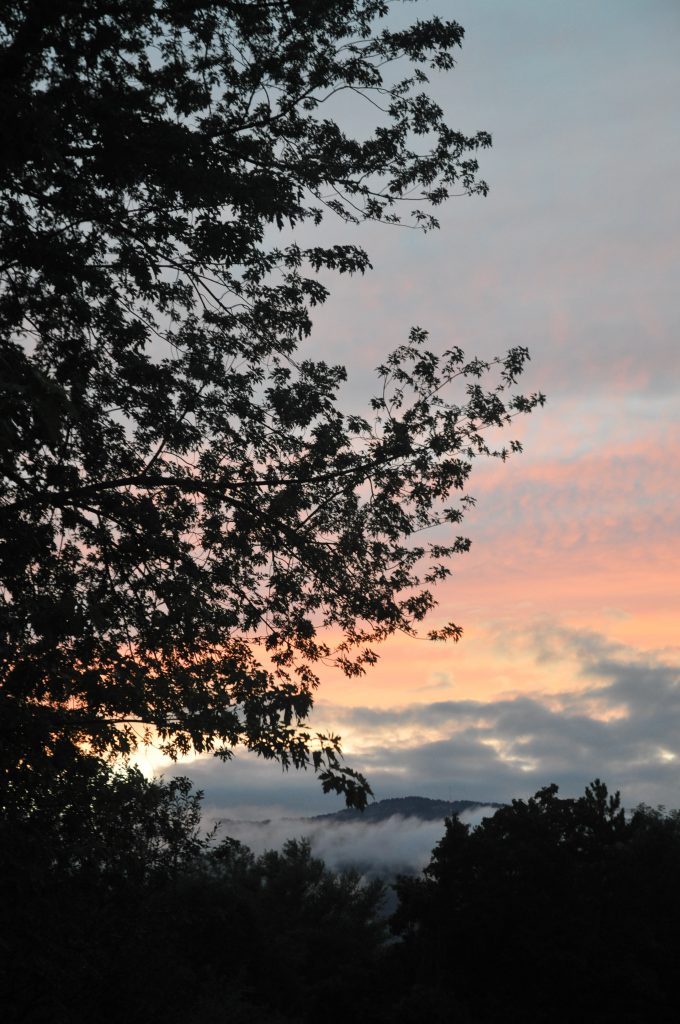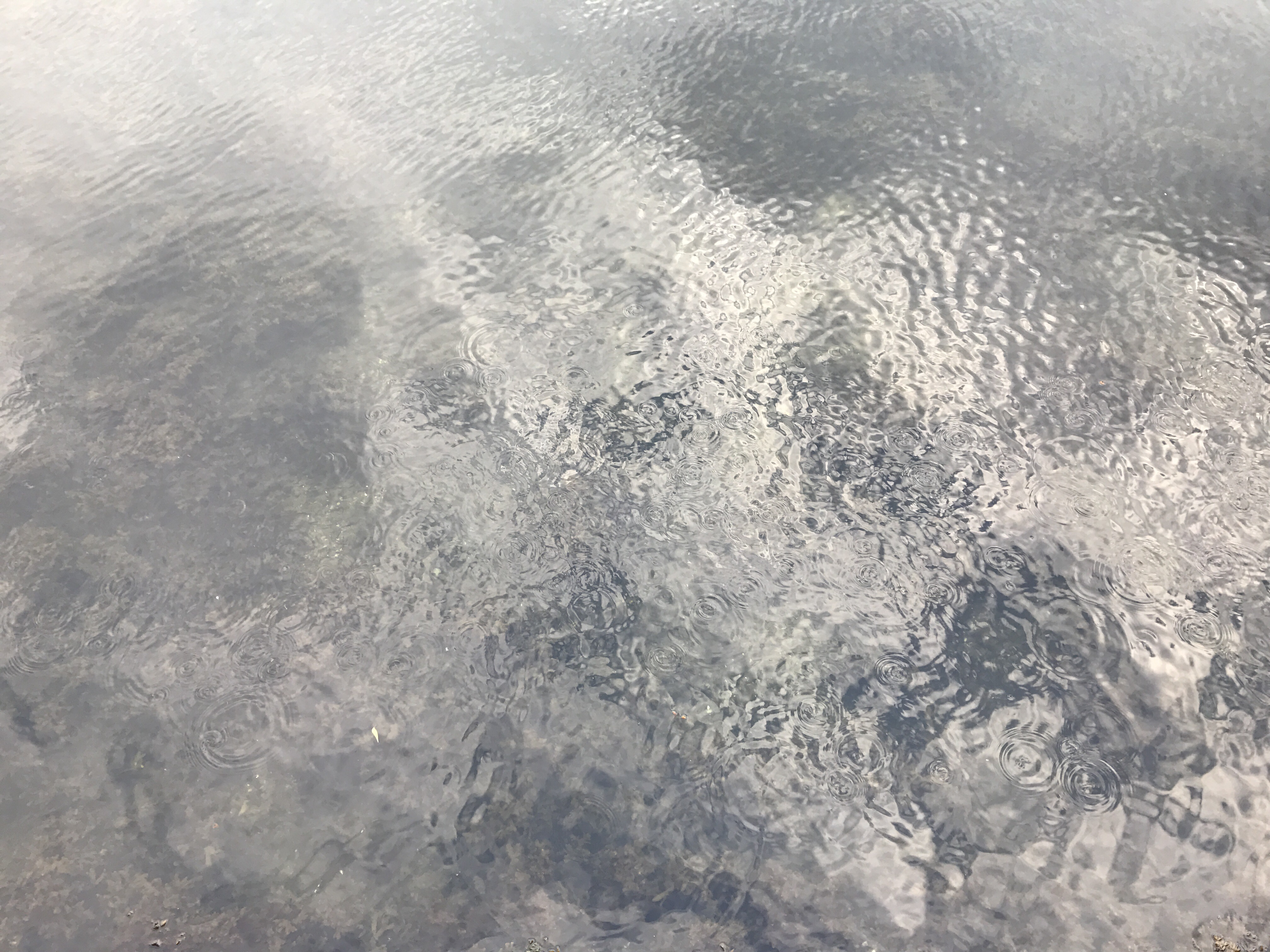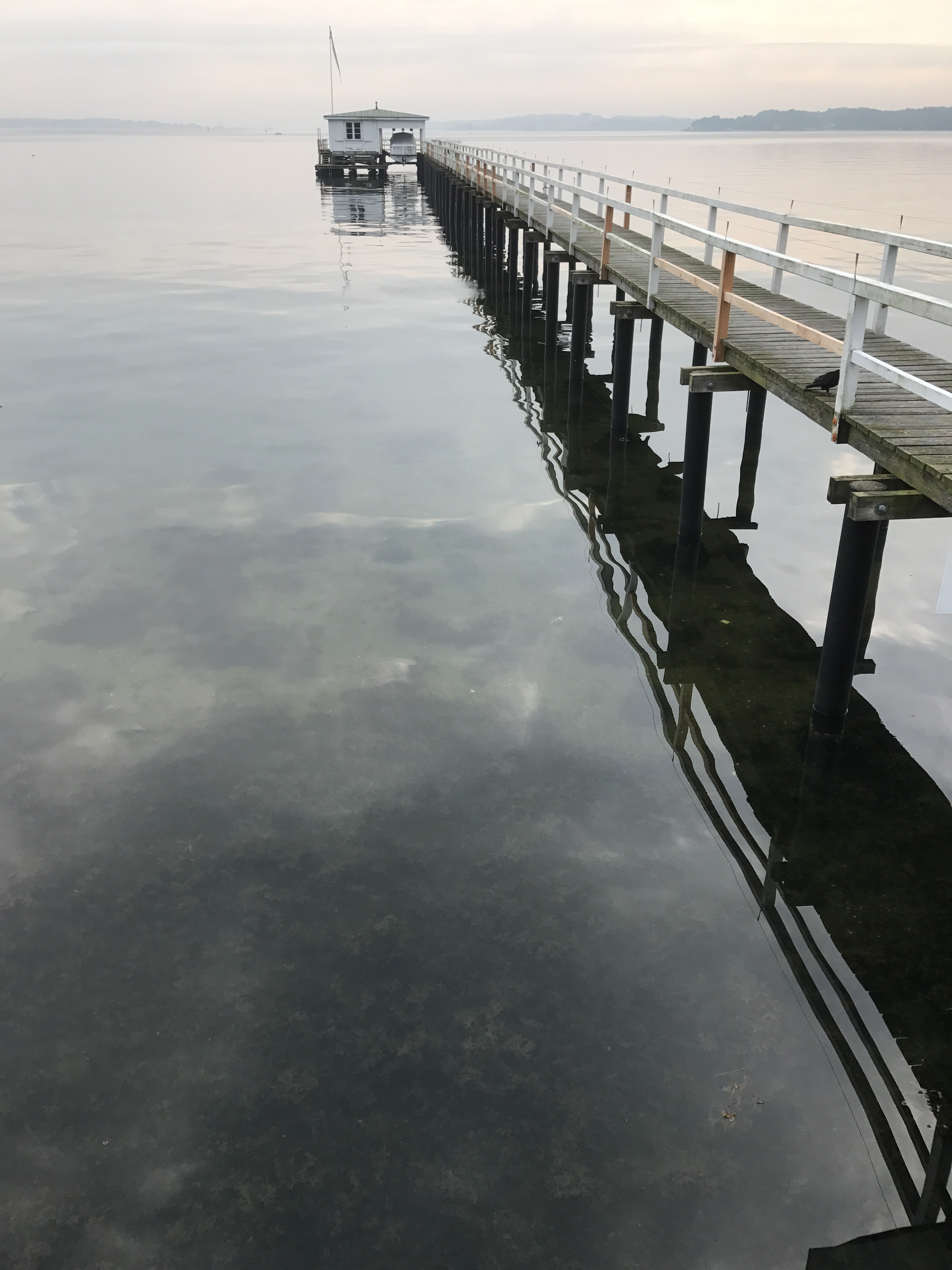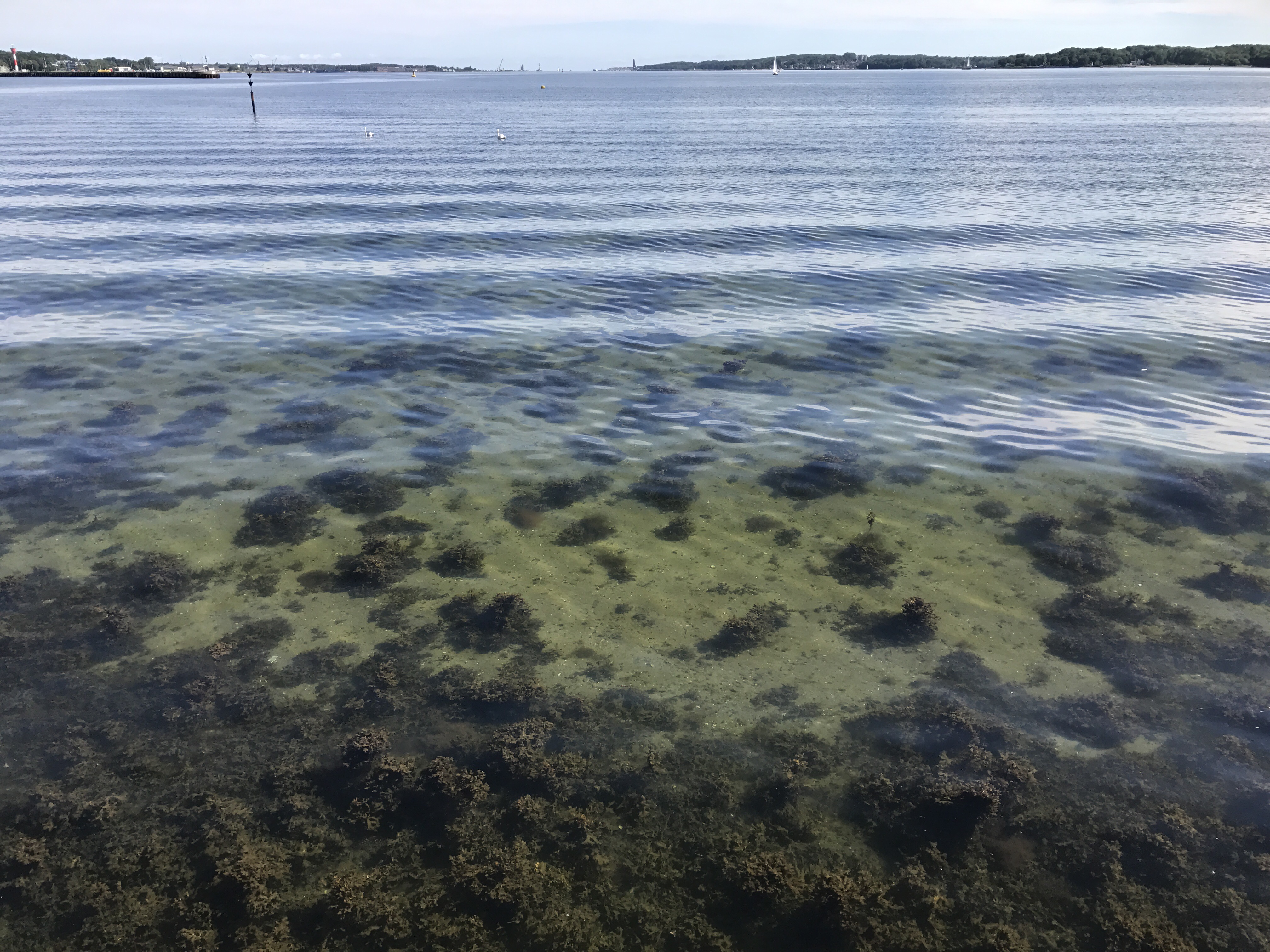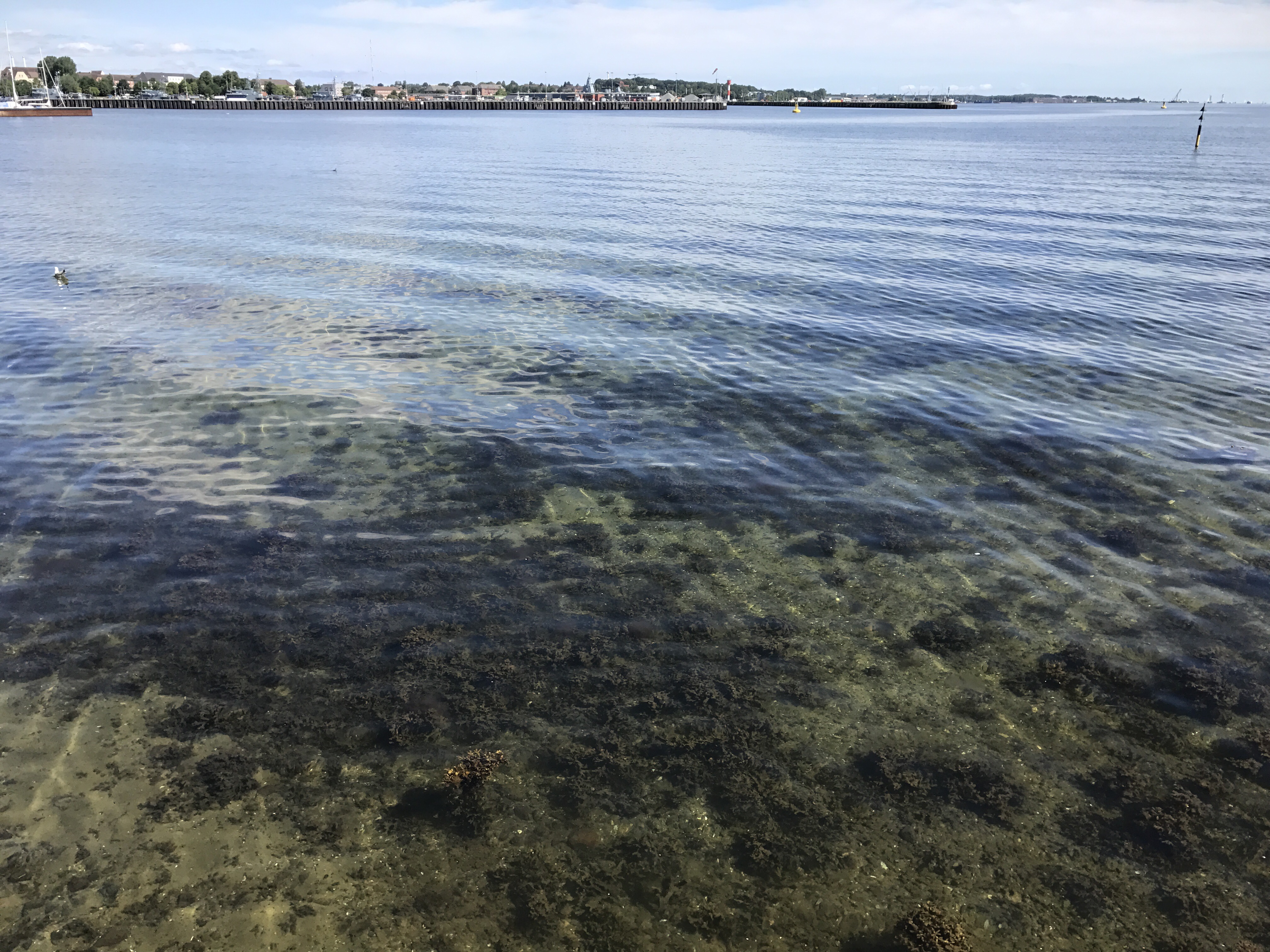Today I went on a wave-hunt expedition to take pictures for posts on the Froude and Reynolds number over at Elin & team’s blog (which you should totally check out if you haven’t done that yet! I am actually proof-reading my posts there and that is saying something ;-))
Anyway. Let’s look at the picture below. Do you see how there are two qualitatively different flow regimes in the Isère? Closer to the banks, you see waves that look like normal waves, happily propagating wherever they want to. And towards the middle of the river, you see that there is a lot of turbulence, but disturbances don’t propagate wherever they want, they are being flushed downstream.
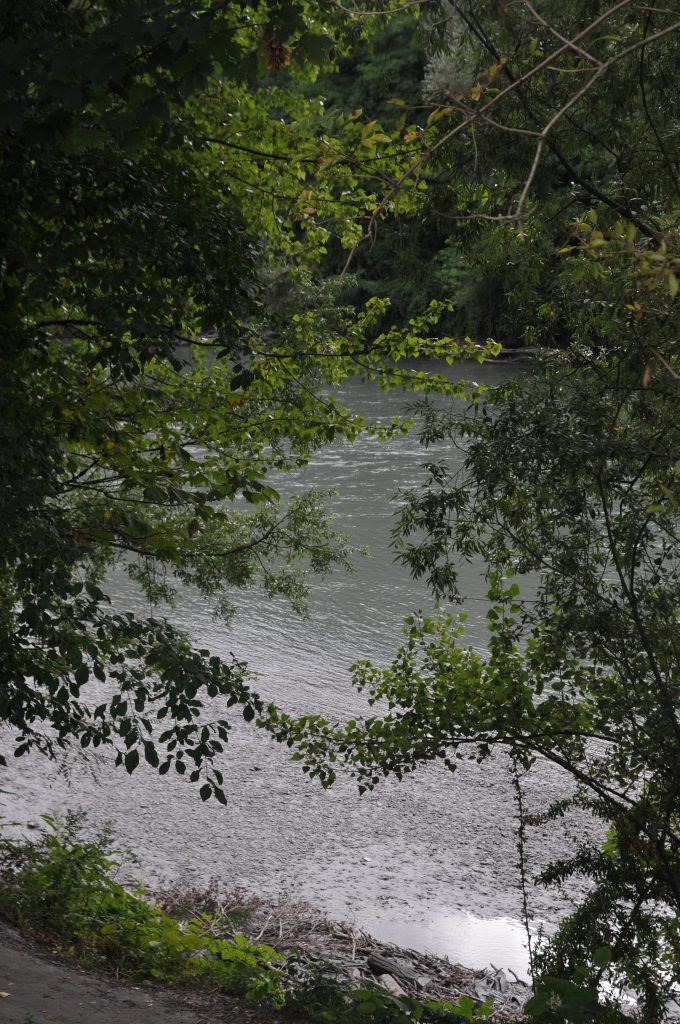
For comparison below a picture of a part of the Isère where it is turbulent all the way to the sides:
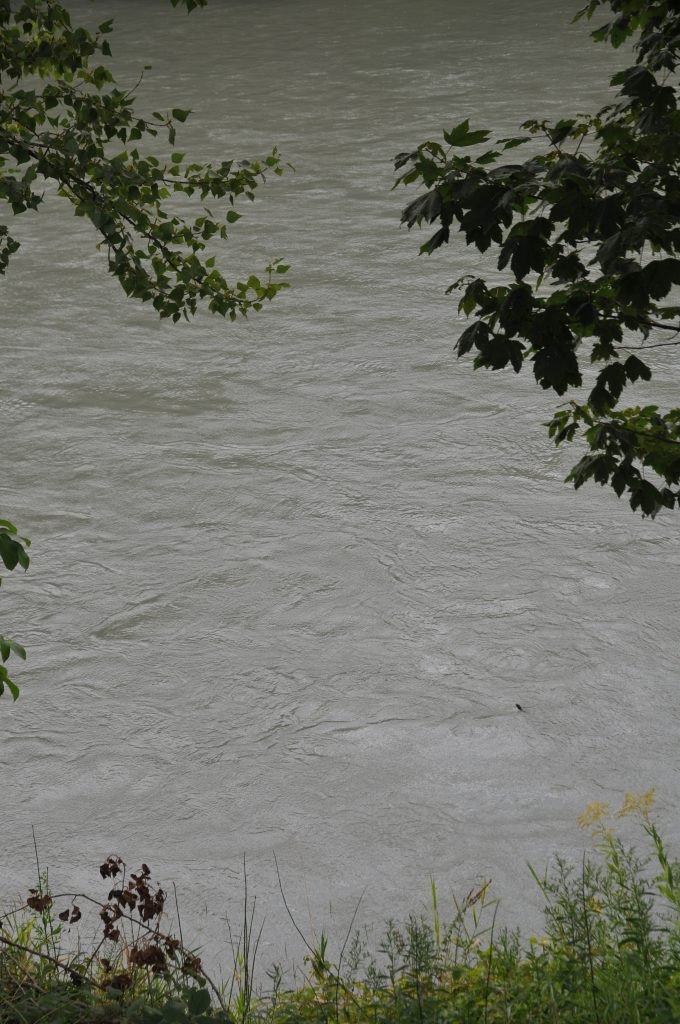
And below a nice example of how phase velocity of waves depends on wave length. See all the small, choppy stuff being flushed downstream and then standing waves caused by some obstacle in the middle of the river? That’s because the longer the wavelength, the faster the wave propagates (assuming that we are in deep water, which I think is a safe assumption in this case). So the river is so fast that the slower waves get flushed away and only waves of the length of those created by the obstacle (or longer) can stay in one place (or even propagate against the current). I think that’s pretty cool.
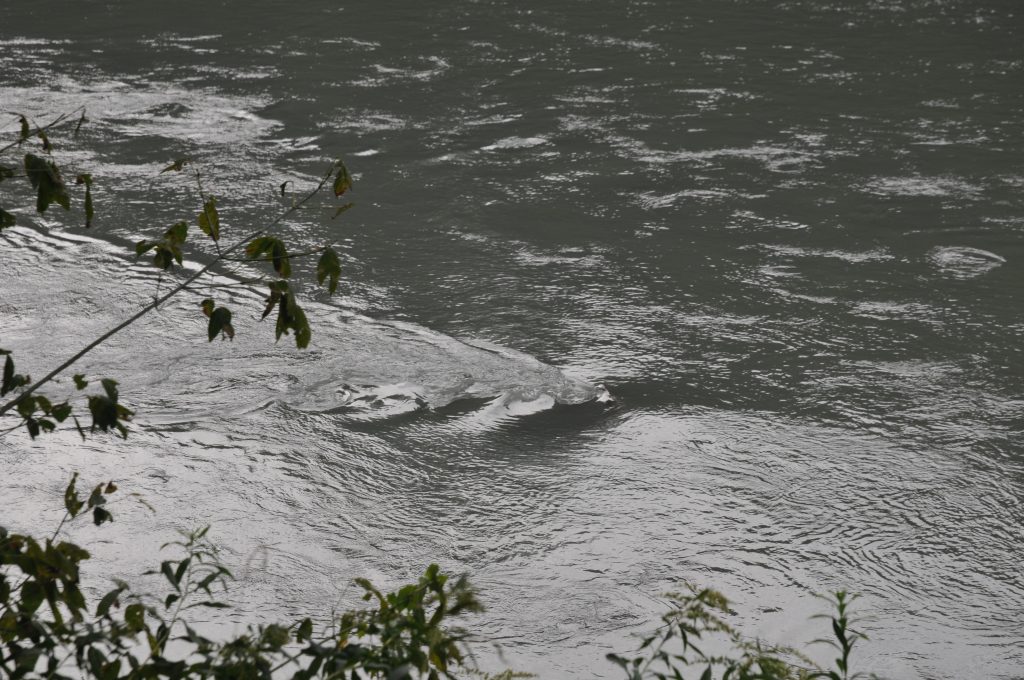
Below is one of my favourite wave-watching sights: A half slit.
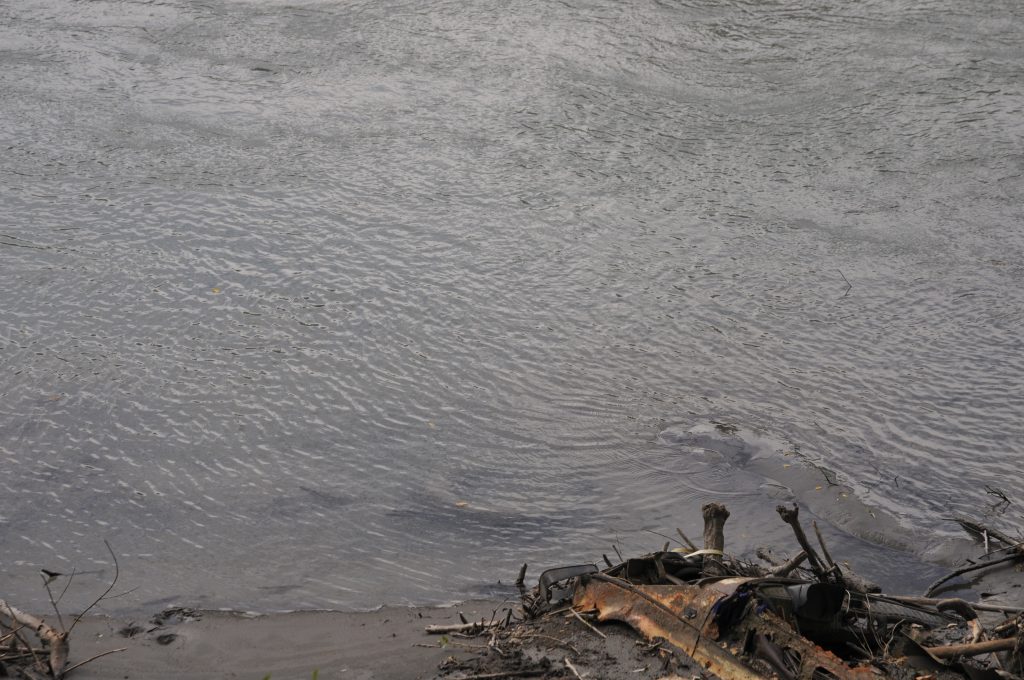
And in the picture below, we can kinda see vortices detaching behind the obstacle (or is that just me)?
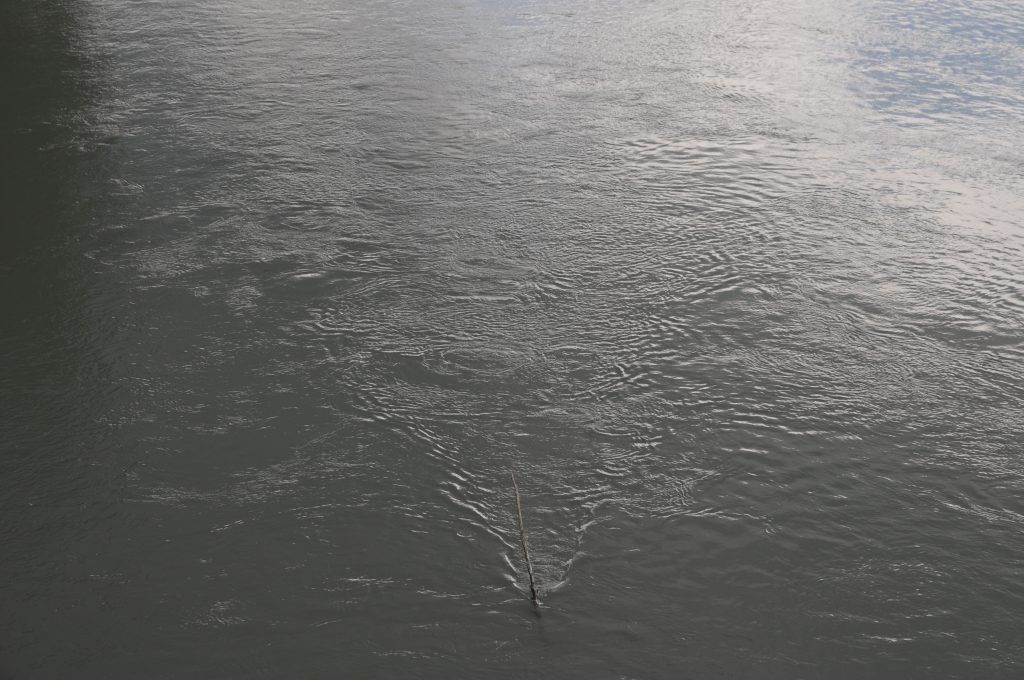
And what I really liked: see the spot below where there are all of a sudden standing waves appearing in the middle of the river? Clearly there is a sill below, but I like that you cannot see the obstacle, just deduce that it must be there from how the waves look :-)

It’s not a hardship to be here, I can tell you ;-)
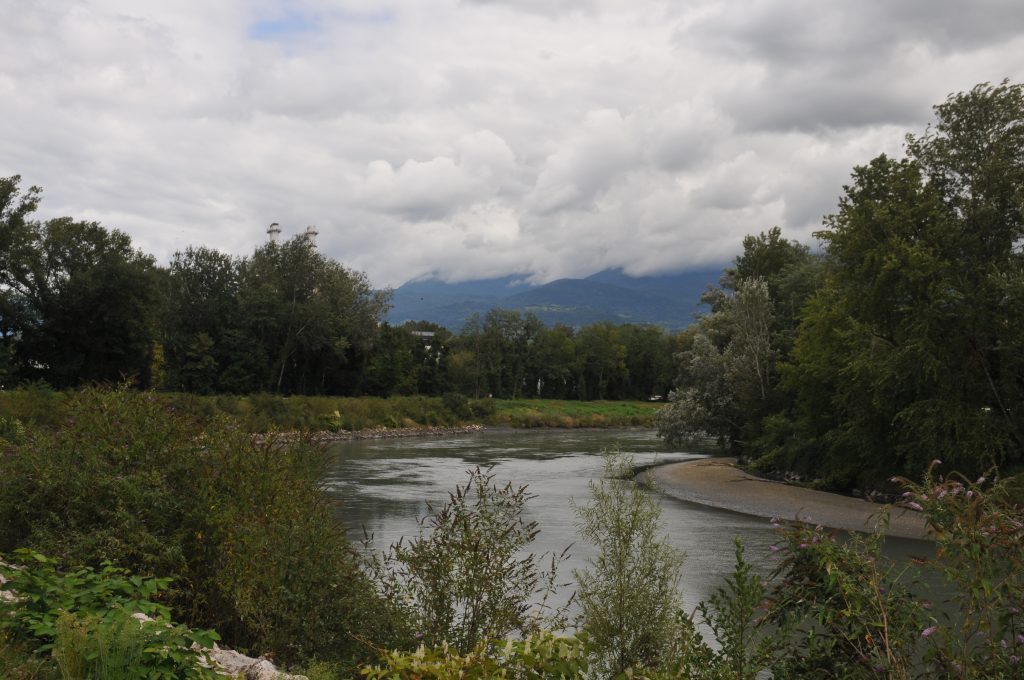
It is quite a beautiful place! And, by the way, this is my 600th blog post on this blog. Can you believe this?
